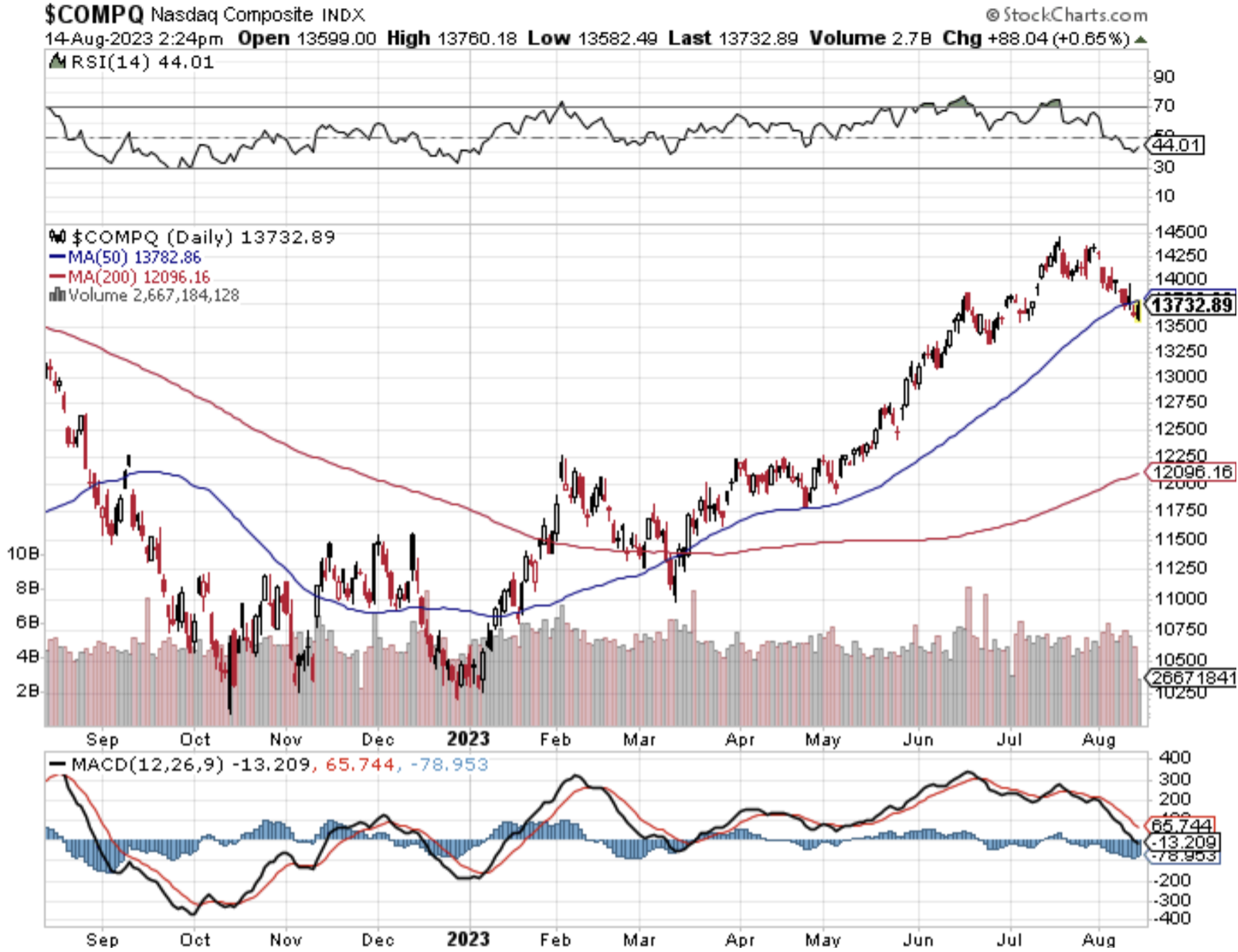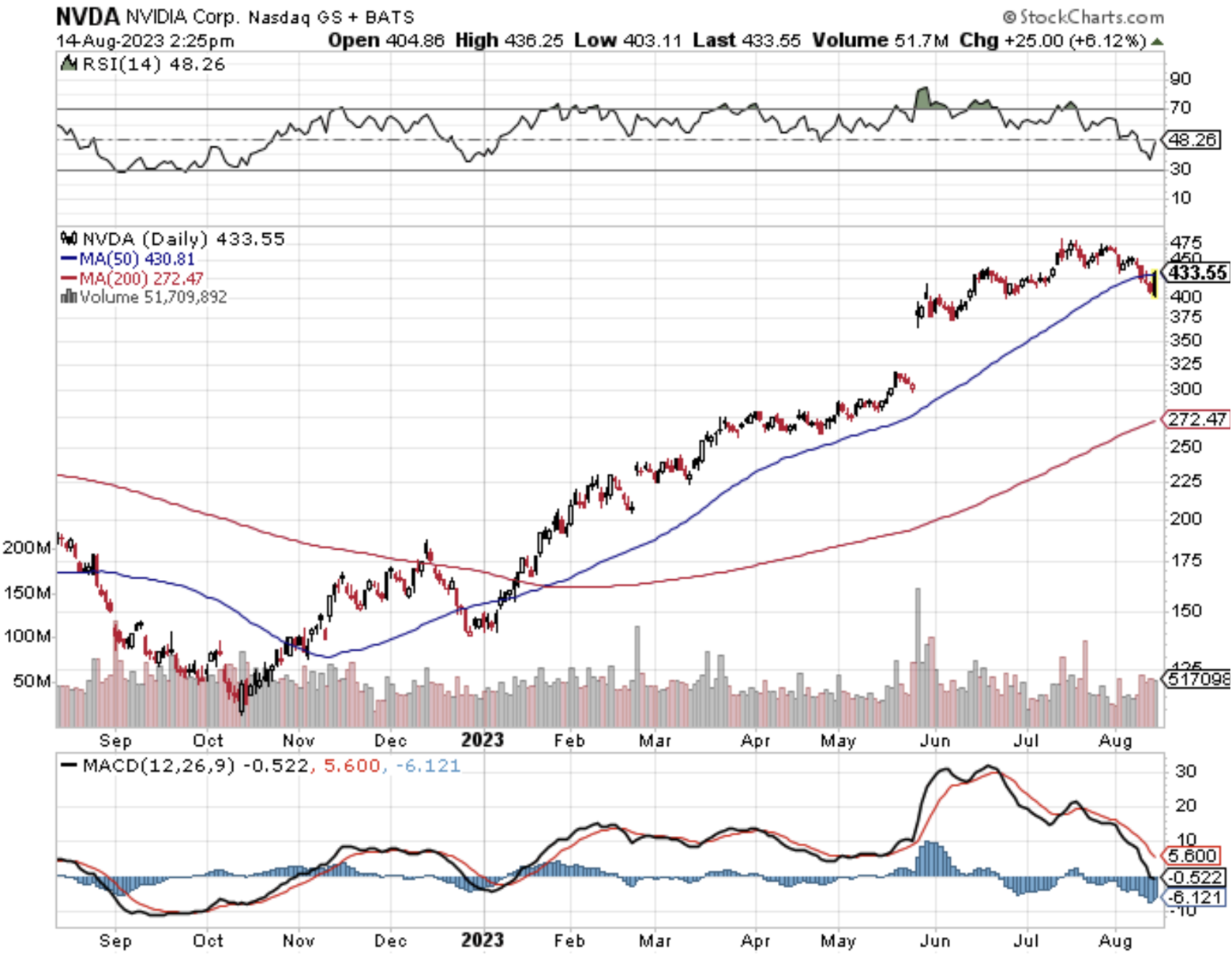The momentum signals that tech shares ($COMPQ) are still working themselves out and need more time to stomach Fitch’s debt downgrade.
Unfortunately, it hasn’t been a one-day dip buying opportunity and this month has been quite abysmal for the tech sector.
Just look at Apple which lost about 10% in value. That’s almost unheard of in today’s day and age.
Many investors are still recalibrating what it means to be on the end of a stunning sudden downgrade for the biggest economy in the world.
Making matters worse, the empirical data is starting to really show that China is teetering on the edge.
Centrally planned economies can have their time in the sun, but eventually, that system blows up as inefficiencies become a doom loop with no end.
There is a good chance at this point in his leadership that Chinese Communist Party Chairman Xi cannot get the right information about what is going on in China because the ranks have been solidified by cadres that leech off the system.
China could mean another leg down to close off the year instead of the relief rally that is poised to lift us back from the short-term weakness.
The Nasdaq index has dropped 4.2% this month, with top tech companies like Nvidia on the brink of 10% decreases.
Even Microsoft, despite its advancements in AI and partnership with OpenAI, has seen a 4% drop in August. Google has also shed 2.1%.
However, one tech giant that has been able to maintain a positive trajectory is Amazon, with its stock up 4% for the month.
This may be due to the company closely monitoring the productivity of employees returning to the office, as increased productivity can lead to higher profits.
The decrease in tech stocks coincides with the 10-year Treasury yield rising from approximately 3.95% in late July to above 4.1% currently.
Some signals suggest that yields may still go up and Fed futures reflect this with around a 35% chance the Fed will hike another .25% to 5.50%.
We could find us swiveling from the soft landing is complete to a “higher (yields) for longer” pivot which is effectively negative for short-term positive price action in tech stocks.
It’s entirely plausible that yields could retest the highs from 2022, based on the chart and recent trends.
This could spell bad news for tech investors, as tech stocks typically do not perform well in an environment of elevated yields. Higher borrowing costs, more attractive returns on cash, and increased scrutiny of future growth are among the challenges that tech companies face when interest rates rise.
However, the tech story is still intact albeit it a substantial amount more fragile than in early 2023.
The pain trade will be higher, but the fragility exposes itself to quicker external risks than before that could topple the market swiftly.
The United States has nobody but themselves to blame after issuing a mountain of debt and it’s largely true that when China sneezes, the world catches a cold.
Tech shares will be confronted with these two rising risks for the foreseeable future.
Best case scenario will see tech grinding higher into year-end, and don’t expect any gaps up. The low-hanging fruit has already been plucked from the vine this year.




